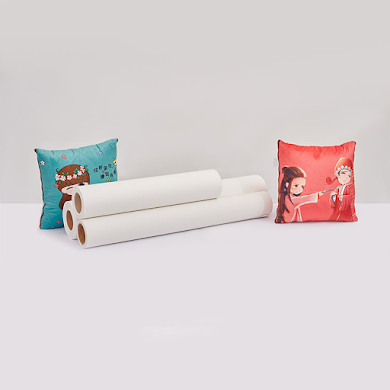Dry Sublimation Paper: A Comprehensive Guide to Printing on Various Surfaces
Dry sublimation paper is a key component in the process of sublimation printing. It enables the transfer of vibrant and high-resolution images onto a wide range of surfaces, making it a popular choice for creating personalized products, custom apparel, and promotional items. This comprehensive guide will provide you with a detailed understanding of dry sublimation paper and its applications in printing on various surfaces.
What is Dry Sublimation Paper?
Dry sublimation paper is a specialty paper specifically designed for sublimation printing. It is coated with a heat-activated polymer that allows for the transfer of sublimation dyes from a printed image onto the intended substrate. Dry sublimation paper works by converting solid dyes into a gas state through heat and pressure, which then penetrate the surface of the substrate and bond with its fibers, resulting in a permanent and vibrant image.
Printing on Various Surfaces:
Dry sublimation paper can be used to print on a wide range of surfaces, including:
Apparel: Dry sublimation paper is commonly used for printing on polyester-based fabrics, such as T-shirts, jerseys, and sportswear. The process ensures vibrant colors and excellent durability without compromising the fabric's breathability.
Hard Substrates: Heat sublimation transfer paper is suitable for printing on hard surfaces like ceramics, metal, glass, and wood. These substrates must have a polymer coating to allow proper dye sublimation and image transfer.
Soft Substrates: Dry sublimation paper can also be used to print on soft substrates like mouse pads, cushions, and fabric bags. The sublimation process ensures long-lasting, washable, and vibrant prints on these materials.
Paper Selection:
When choosing dry sublimation paper, consider the following factors:
Weight: Dry sublimation paper is available in different weights, typically measured in grams per square meter (gsm). Higher weights offer better ink absorption and reduce the risk of paper curling during the printing process.
Coating: Ensure that the paper has a proper coating specifically designed for dry sublimation printing. The coating should allow the ink to be transferred easily and ensure optimal color saturation and sharpness.
Size: Dry sublimation paper comes in various sizes, including standard sheet sizes and rolls. Select the size that fits your printing equipment and the dimensions of the substrates you plan to print on.
Printing Process:
To achieve successful prints with dry sublimation paper, follow these general steps:
Design and prepare your artwork using graphic design software.
Print the image onto the dry sublimation paper using a sublimation printer and compatible sublimation inks.
Pre-press the substrate to remove any moisture and ensure a smooth surface for the transfer.
Place the printed dry sublimation paper onto the substrate, ensuring proper alignment.
Apply heat and pressure using a heat press machine, which activates the sublimation process and transfers the image onto the substrate.
Remove the paper, and your printed product is ready for use or further processing.
Tips for Successful Printing:
Consider the following tips to enhance your dry sublimation printing results:
Calibrate your printer regularly to ensure accurate color reproduction.
Use high-quality sublimation inks and ensure they are compatible with your printer and dry sublimation paper.
Conduct test prints and adjustments to optimize color saturation, sharpness, and overall image quality.
Maintain proper heat press settings, including temperature, pressure, and dwell time, as recommended by the manufacturer.
Take caution with substrates that may require additional surface preparation, such as pre-coating or pre-pressing, to achieve the best results.
Post-Processing and Care:
After printing with dry sublimation paper, some post-processing may be required depending on the substrate. For textiles, heat pressing again after printing can help ensure color fastness and durability. It's important to follow the manufacturer's instructions for care and washing to maintain the vibrancy and longevity of the printed image.
Dry sublimation paper offers a versatile and efficient solution for printing on various surfaces. By understanding its properties, selecting the OEM sublimation paper, and following proper printing techniques, you can achieve outstanding and professional results in your sublimation printing projects. Experiment with different substrates, unleash your creativity, and explore the endless possibilities of dry sublimation printing.

评论
发表评论